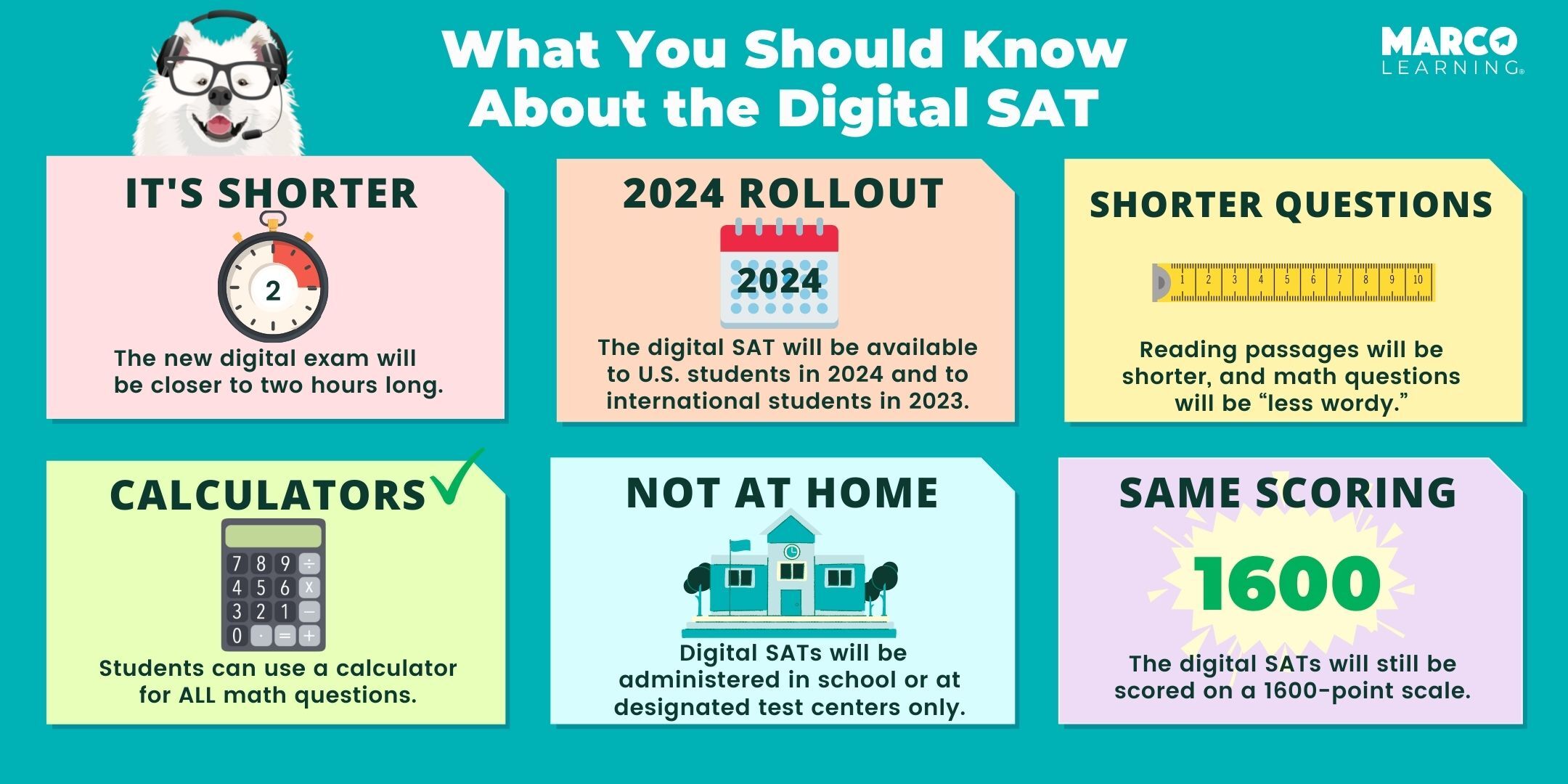by John Moscatiello
The College Board announced today that the SAT is going to become a digital test over the course of the next two years. By 2024, all SAT Exams will be administered via computer. In addition to changing the test from paper to digital, the College Board is also shortening the test by one hour and changing the length and format of many of the questions. Will these changes be enough to save the SAT from its sharp decline over the past two years?
Here are the key changes being made to the new SAT:

Even before the pandemic, the SAT was facing a number of challenges. In 2019, there were some 900 colleges and universities that had become test optional, dropping the requirement to submit SAT or ACT scores, but still allowing students to submit their scores if they wanted to. When the pandemic closed schools in March 2020, most SAT administrations were cancelled and more than a thousand new colleges changed their policies to test optional. Since the early days of the pandemic, it has been nothing but bad news for the SAT with the University of California system going permanently “test blind” and Harvard announcing test optional policies until 2026.
The digitization of the SAT has been a long time coming. As Akil Bello noted in April 2020, the plan to release a digital SAT has been part of the College Board’s coronavirus self-defense plan. Challenges to securely offering an at-home SAT stymied the College Board’s efforts to offer the SAT digitally during the peak of the pandemic. Today’s announcement video combines a list of product specifications with a full-throated defense of the SAT. Clearly, the College Board is hoping that these changes will help them win the argument against critics of the SAT.
But the new digital SAT may just end up making no one happy. Defenders of the SAT have decried the “dumbing down” of high school graduation requirements and college admissions standards. For them, the SAT was the last hope of an “objective” standard in college admissions. By shortening the test, trimming reading passages, and condensing math questions, the College Board is making a test that some will accuse of being insufficiently rigorous.
Critics of the SAT are unlikely to be satisfied with these changes. By shortening the reading passages and math questions and removing the no-calculator section, the College Board has put an expiration date on all the materials students are currently using to study for the SAT. The College Board will be providing new free materials through its partnership with Khan Academy, but until those materials are released, students cannot prepare with the newly formatted questions and time distribution.
As we have seen with AP Exams, whenever standardized tests are changed, the inequity between wealthy and poor students is exacerbated. Many wealthy students will be guided by tutors through the new strategies that will be developed for this exam, while other students will be left alone to navigate this new kind of test.
Moreover, as I argued on YouTube last year, there are foundational challenges to the SAT program, including the perception that the test is an engine of inequity and the usefulness of test optional policies to colleges. It is hard to see how this new format can really change the nature of the argument.
But too much of the coverage about the SAT focuses on Ivy League colleges and on consumer behavior. Millions of high school students are required to take an SAT or ACT by the laws of their home states. Until those requirements are changed by state legislatures and governors, the new digital SAT will persist as an essential part of the high school experience for years to come.
Here’s everything you need to know about the new digital SAT:
Q. When can I take the digital SAT?
- A. The digital SAT tests will be available to take internationally in 2023, and in 2024 for students in the United States.
Q. Can I take the digital SAT at home?
- A. The digital SAT will be administered in school or at designated test centers only.
Q. How long is the digital SAT?
- A. The digital SAT will be shorter than its paper counterpart, lasting around two hours total, rather than three.
Q. Will the questions be the same format on the new exam?
- A. The questions on the digital SAT will still be designed to test the same skills, but the reading passages will be shorter, and math questions will be “less wordy.”
Q. Will I be able to go back and forth on questions on the digital SAT?
- A. Yes, you will be able to go back and forth on sets of questions, but the test will be adaptive by section. This means that the computer will adapt the questions you see based on your performance during the exam.
Q. Can I use a calculator?
- A. Yes. On the new digital exam, you can use a calculator for all math questions.
Q. What can I use to take a digital SAT?
- A. The digital SAT test can be taken on a personal laptop or school-based computer.
Q. What if I don’t own a laptop or tablet?
- A. Your school should provide you with a device you can use to practice taking the SAT in digital format, and The College Board has pledged to issue digital test-taking devices to any students who need one to take their digital SATs.
Q. Will there be more test dates available for the digital SAT?
- A. The College Board has not yet released test date information on the digital SAT, just that it will be available starting in 2024 for U.S. students, and 2023 for international students.
Q. How do I practice for this new test?
- A. Official digital SAT practice will be available in fall 2022, at which point students will be able to review and take full-length practice tests in the new format.
Q. Will the new SATs be scored the same way?
- A. The digital SAT will still be scored on a 1600-point scale.
Q. Can I still take a paper SAT if I prefer?
- A. Students in the U.S. will be able to take the paper-and-pencil SAT test until spring 2024, after which the only available format for the entire suite of SAT assessments will be digital.

John Moscatiello is the founder of Marco Learning. He has been a teacher, tutor, and author since 2002. Over the course of his career, John has taught more than 4,000 students, trained hundreds of teachers, written content for 13 test preparation books, and worked as an educational consultant in more than 20 countries around the world.
 Help
Help